Tarih
Alman Güney Batı Afrika pulları posta damgalı Cap Çapraz 1900
Portekizli gezgin ve kaşif Diogo Cão 1484 yılında Kral tarafından sipariş edildi João IIdeniz yolu arayışının bir parçası olarak Hindistan ve Baharat Adaları, güneye, Afrika’nın batı kıyısı boyunca keşfedilmemiş bölgelere ilerlemek. Bunu yaparken, özellikle göze çarpan bazı noktaları seçecek ve bunları, her birinin üzerine bir taş haç dikerek Portekiz için talep edecekti. Padrão.
1482’de gerçekleştiği sanılan ilk yolculuğu sırasında, Monte Negro adında, bugün Cabo de Santa Maria olarak adlandırılan, bugünün yaklaşık 150 km güneybatısındaki bir yere ulaştı. Benguela, Angola.
Cão 1484-1486 yıllarındaki ikinci yolculuğu sırasında, 1486 Ocak ayında Cape Cross’a ulaştı ve bu bölgeyi ziyaret eden ilk Avrupalı oldu. Bu yolculuk sırasında c. İlkinden 1.400 km daha uzak. İlk yolculuğunun ötesinde, biri Monte Negro’da, ikincisi de Cape Cross’ta olmak üzere iki padra diktiği biliniyor. Yerin şu anki adı bu padrão’dan türetilmiştir. Bugün Cape Cross’ta bulunabilenler, bu ilk haçın iki kopyası.
Cão’nun ilk seferi yalnızca altı yıl gerçekleşti ve ikinci sefer yalnızca iki yıl önce sona erdi. Bartholomeu Dias başarıyla yuvarladı Ümit Burnu 1488’de ilk Avrupalı kaşif olarak.
Cape Fur Seal Facts
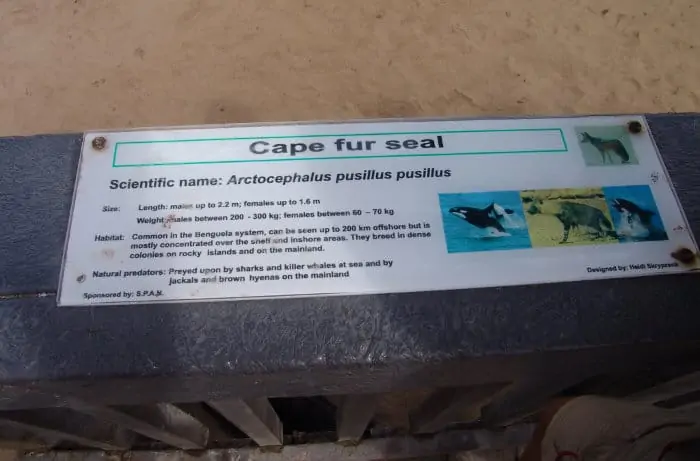
The species of seal you’ll find at Cape Cross is the Cape fur seal; the largest of the nine fur seal species. They’re curious creatures and cute, too. Here are some facts to help you get acquainted with them.
- Their scientific name is Arctocephalus pusillus pusillus.
- Males grow up to around 2.2 meters in length and females top out at around 1.6 meters.
- While male and female Cape fur seals don’t vary hugely in terms of length, the males are usually a lot heavier. Females average around 60-70 kg, while males weigh between 200 and 300 kg.
- The seals feast on a diet of fish, squid, and cuttlefish from the nutrient-rich waters of the Benguela Current. Their favorite fish species are maasbanker, pilchard, hake, and Cape mackerel.
- Unfortunately for the seals at Cape Cross, they have predators from both the sea and land to worry about. Sharks and killer whales prey on them at sea, and jackals and brown hyenas hunt them from the mainland.
- Cape Cross has a seal population of up to 210 000 individuals, which makes it the largest breeding colony of Cape fur seals in the world.
- The Cape Cross Seal Reserve is 60 square kilometers in size.
История
Португальский мореплаватель и исследователь Диогу Као в 1484 году был заказан королем Жуаном II, в рамках поиска морского пути в Индию и Острова специй, чтобы продвинуться на юг в неизведанные регионы вдоль западного побережья Африки. При этом он должен был выбрать некоторые особо выдающиеся точки и потребовать их для Португалии, установив на каждой каменный крест под названием padrão.
. Во время своего первого путешествия, которое, как считается, произошло в 1482 году, он достиг места он называл Монте-Негро, ныне Кабо-де-Санта-Мария, примерно в 150 км к юго-западу от сегодняшней Бенгелы, Ангола.
Во время своего второго путешествия, в 1484–1486 годах, Као достиг мыса Кросс в январе 1486 года, став первым европейцем, посетившим эту местность. Во время этого путешествия он продолжил c. На 1400 км дальше, чем во время первого. Известно, что он построил два падрао в районах после своего первого плавания: один в Черногории, а второй на мысе Кросс. Текущее название места происходит от этого padrão. То, что сегодня можно найти на мысе Креста, — это две копии этого первого креста.
Первая экспедиция Као длилась всего шесть лет, а вторая экспедиция завершилась всего за два года до того, как Бартоломеу Диас успешно обогнул мыс Доброй Надежды первым европейским исследователем в 1488 году.
History
Stamps for German South West Africa postmarked Cap Cross 1900
The Portuguese navigator and explorer Diogo Cão was in 1484 ordered by King João II, as part of the search for a sea route to India and the Spice Islands, to advance south into undiscovered regions along the west coast of Africa. While doing so, he was to choose some particularly salient points and claim them for Portugal by setting up on each a stone cross called padrão.
During his first voyage, thought to have taken place in 1482, he reached a place he called Monte Negro, now called Cabo de Santa Maria, roughly 150 km southwest of today’s Benguela, Angola.
During his second voyage, in 1484–1486, Cão reached Cape Cross in January 1486, being the first European to visit this area. During this voyage he proceeded c. 1,400 km farther than during the first one. He is known to have erected two padrãos in the areas beyond his first voyage, one in Monte Negro, and the second at Cape Cross. The current name of the place is derived from this padrão. What can today be found at Cape Cross are two replicas of that first cross.
Cão’s first expedition took place only six years, and the second expedition’s end only two years before Bartholomeu Dias successfully rounded the Cape of Good Hope as the first European explorer in 1488.
Запас тюленей
Столкновение в колонии тюленей на мысе Кросс
Сегодня Кейп Кросс — это охраняемая территория, принадлежащая правительству Намибии под названием Заповедник Кейп Кросс . В заповеднике обитает одна из крупнейших в мире колоний морских котиков мыса .
Мыс Кросс — одно из двух основных мест в Намибии (другое — в Людерице ), где тюленей забивают , частично для продажи их шкур, а частично для защиты рыбных запасов. Экономическое влияние тюленей на рыбные ресурсы противоречиво: в то время как исследование, инициированное правительством, показало, что колонии тюленей потребляют больше рыбы, чем может выловить вся рыбная промышленность, общество защиты животных Seal Alert South Africa оценило потери коммерческого рыболовства менее чем в 0,3%.
What is the nature reserve famous for?
Cape Cross is on the south-western coast of Namibia, on the Cape Cape. The distance from the southernmost tip of the continent to the sights is more than 1600 km. Here in 1485 (the Age of Great geographical discoveries) the Portuguese expedition of Diogu Cana landed.
The captain mistakenly took Cape Cape Point for the southern point of Africa. The researcher set a memorable pillar of stone at the highest mark of the coast, in the form of a cross, called padran. This meant that this territory now belongs to Portugal.
The obelisk was here for 408 years. Then he was discovered by the colonialists and sent back to his homeland, and on the coast an exact copy of the padran was installed. By the way, the name of the area Cape Cross went on behalf of the monument, which translates as «Cape of the Cross.»
What else to see in Cape Cross?
The main feature of the reserve is the rookery of Cape fur seals located here. They are considered to be the largest representatives of eared seals.
This is one of the largest colonies on our planet, which is famous throughout the world. The bodies of animals sparkle in the sun, they cover the rocks and the coast of the reserve, and everywhere there is a roar and a squeal of seals. Annually about 100 thousand pinnipeds gather on the cape. Here, tourists can see:
- as adult males are fighting for a better place or for females;
- as small fur seals play with each other;
- how the females feed their babies;
- as young learn to swim and fish.
During the mating season (November to December) males surround themselves with a large harem and arrange ritual games. This period is the most interesting to visit. At this time, various scientists and researchers come here who monitor the behavior of pinnipeds, as well as photographers and filmmakers.
Features of visit
Every year, up to 30,000 babies are born in Cape Cross. On them and on adults, but sick seals attack hyenas and jackals. The conditions of the reserve are as close to natural as possible, so no carcass removes the carcasses of dead animals. Therefore, on the cape is a specific smell, which is absorbed into the clothes and skin of visitors. Tourists need to be prepared for this factor. The cost of admission is about $ 4.5. The Cape Cross Reserve is open every day:
- from the middle of November until the end of June — from 08:00 to 17:00;
- from July 1 until November 15 — from 10:00 to 17:00.
How to get there?
The nearest town is Swakopmund . From it to the cape can be reached by car on the road C34. At the entrance there is an index. The distance is about 120 km.
История
Марки Германской Юго-Западной Африки со штемпелем Кепка Креста 1900 г.
В 1484 году король Жуан II приказал португальскому мореплавателю и исследователю Диогу Као в рамках поиска морского пути в Индию и острова специй продвинуться на юг в неизведанные районы западного побережья Африки. При этом он должен был выбрать некоторые особо выдающиеся точки и потребовать их для Португалии, установив на каждой каменный крест, называемый падрау .
Во время своего первого путешествия, которое, как считается, произошло в 1482 году, он достиг места, которое он называл Монте-Негро, теперь называемого Кабо-де-Санта-Мария, примерно в 150 км к юго-западу от сегодняшней Бенгелы , Ангола.
Во время своего второго путешествия в 1484–1486 годах Као достиг мыса Кросс в январе 1486 года, став первым европейцем, посетившим этот район. Во время этого путешествия он продолжил ок. На 1400 км дальше, чем во время первого. Известно, что он построил два падрао в районах после своего первого плавания: один в Черногории, а второй — на мысе Кросс. Текущее название места происходит от этого padrão. То, что сегодня можно найти на мысе Креста, — это две копии того первого креста.
Первая экспедиция Као длилась всего шесть лет, а вторая экспедиция завершилась всего за два года до того, как Бартоломеу Диас успешно обогнул мыс Доброй Надежды в качестве первого европейского исследователя в 1488 году.
Оценки
- « Кейп-Кросс » (на английском языке) . Capecross.org. Архивировано из оригинала 9 июня 2018 года . Проверено 30 мая 2010 г.
- Суони, Дина (1992). Lonely Planet: Зимбабве, Ботсвана и Намибия. 1-е издание. Опубликовано Singapore National Printers Ltd.
- Véase en: Министерство окружающей среды и туризма Республики Намибия: Заповедник тюленей Кейп-Кросс Архив от 27 сентября 2011 г. en Wayback Machine ..
- « Кейп-Кросс — Намибия » (на английском языке) . nambian.org. Архивировано из оригинала 11 февраля 2010 года . Проверено 30 мая 2010 г.
- Вайдлих, Бриджит (28 июня 2007 г.). «Закрыть квоту на этот сезон» . Намибиец .
- «Пора Намибии увидеть туристическую ценность тюленей» . Намибиец . 17 июня 2010 г. Архивировано из оригинала 17 марта 2012 г.
History of Cape Cross
Human History
Rock art depictions of seals and penguins at Twyfelfontein in Namibia’s Kunene Region suggest that members of the indigenous San tribe likely fished and hunted along the Skeleton Coast for centuries before the first Europeans arrived in the 15th century. However, the first recorded visit to Cape Cross was that of Portuguese explorer Diogo Cão, who landed there in 1486 on his second expedition south of the equator in search of a sea route around Africa to India and the Spice Islands. Cão staked his claim for Portugal with the construction of a padrão, or stone cross, which also marked the southernmost boundary of his adventures south. It is this cross that gives the headland its modern name. The original was removed by a German Navy commander in 1893 and now stands in Berlin’s Deutsches Historisches Museum, but two replicas can still be seen at Cape Cross today.
The Seal Colony
Although it is not known when the fur seal rookery at Cape Cross was established, it was the inspiration for the construction of Namibia’s first railway line in the late 1800s. Trains transported workers to Cape Cross, and returned laden with seal pelts and guano (seabird excrement) to the ships that would export them to Europe. The guano was considered a valuable fertilizer, and the pelts were much desired for their luxurious thickness and softness. In 1968 the Cape Cross Seal Reserve was proclaimed, ostensibly for the protection of the seals and seabirds that live there. However, Cape Cross still hosts one of the only sanctioned annual seal culls in Namibia, with pups killed for their fur and bulls killed to protect commercial fish stocks. This controversial practice is challenged by environmentalists, who claim that the fur seals have a negligible effect on Namibia’s fishing industry.
When to Go
In mid-October, fur seal males arrive at the colony to establish their breeding territories, fighting noisily for the best spots. With their attention consumed by the task at hand, the males do not have time to fish and can lose up to half their body weight by the time the females arrive in November. However, the sacrifice is worthwhile for males who secure the best territories, as they will have the right to mate with a harem of up to 60 females. The majority of the females arrive already pregnant with pups conceived during the last breeding season, and will also fight for birthing space within the territory of their chosen male. Once they give birth, they are able to conceive again within a matter of days.
Peak breeding season runs from November to December, and as many as 210,000 fur seals have been recorded at the rookery during this time. Pups stay on land until they are weaned (between four and six months), so December to June is a good time to visit if you want to see plenty of plump babies. Be warned that you may also witness the grisly spectacle of a jackal or hyena predation, although seeing these predators in action is a privilege in its own right. No matter when you visit, there will always be some seals to see as mothers and pups return to the rookery throughout the year. The reserve is open daily from 10 a.m. to 5 p.m., and permits must be purchased from reception.
Соленый дар земли
Как вы думаете, друзья, обычная поваренная соль и соль морская — разные вещества? Разные? Тогда какая из них полезнее? Морская? Потому что в ней, кроме прочего, содержится йод? Сейчас мы раз и навсегда разберемся с этими вопросами.
Начнем с того, откуда соль получают. Обычную — добывают в шахтах под землей, а морскую — выпаривают из воды морей и океанов. Но дело в том, что лежащий под землей на той или иной глубине NaCl, образовался вследствие высыхания сотен миллионов лет назад древних морей.
Эта соль из-под земли не идеальна — содержит древний ил, разные примеси. Так что ее непременно очищают, прежде чем отправить в наши магазины.

Современные моря и океаны содержат в себе абсолютно тот же самый, только растворенный NaCl. Кроме него — соединения кальция и магния, кстати, именно они придают морской воде горечь, а также еще 75 самых разных химических элементов.
Если где-нибудь на побережье залить морскую воду в неглубокие запруды, то со временем, солнце и ветер выпарят воду, а в осадке останется соль. И эта соль тоже будет не безупречна: В ней окажутся примеси глины, каких-нибудь местных элементов, морских водорослей.
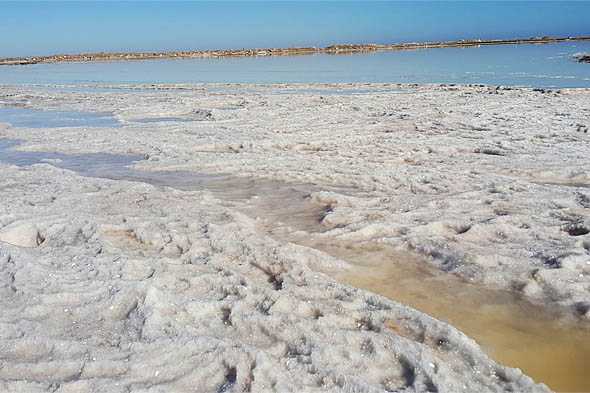
Впрочем, это может оказаться не так уж и плохо: некоторые соли с примесями имеют экзотический цвет и пикантный вкус, так что они имеют своих поклонников среди кулинаров и едоков. Существуют даже специализированные магазины морской соли, где знатокам и ценителям предлагают на выбор из Индии – соль черную, из Кореи — розовато-серую, или красную — с Гавайских островов.
Стоп! Но почему же мы говорим об осадке после выпаривания только как о хлориде натрия? Куда подевались остальные многочисленные элементы из морской водички?
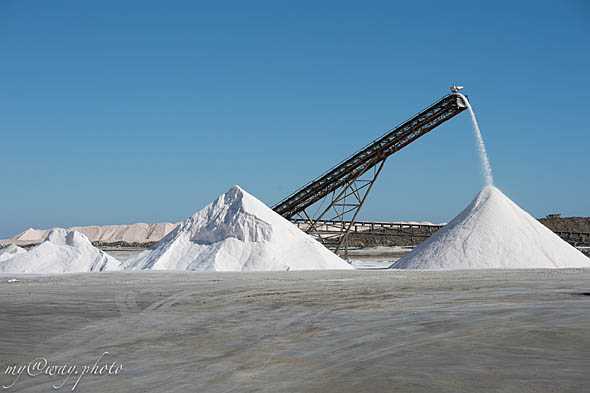
Друзья, дело в том, что при выпаривании — важный момент! — происходит кристаллизация соли. Оказывается, этот естественный процесс является эффективной природной очисткой получаемого продукта от прочих минеральных веществ.
Испарение морской воды солнцем позволяет получить продукт, на 99% состоящий из чистой соли, оставшийся процент — это соединения кальция и магния, а все остальное бесследно исчезает. Йод в том числе! Промышленно извлекать какие-либо другие элементы из морей и океанов человечество пока не умеет. Запатентованные способы получения, например, брома и йода, не столь просты.
Вы спросите, зачем же тогда нужны шахты — когда вон как хорошо ее выпаривать солнышком. Способ этот, конечно, хороший. Только очень уж долгий. Соль до готовности проходит пятилетний цикл обработки в разных отстойниках.
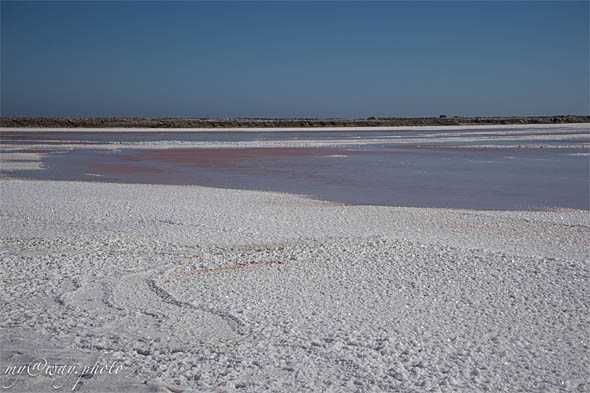
Where is the Cape Cross Seal Colony Located?
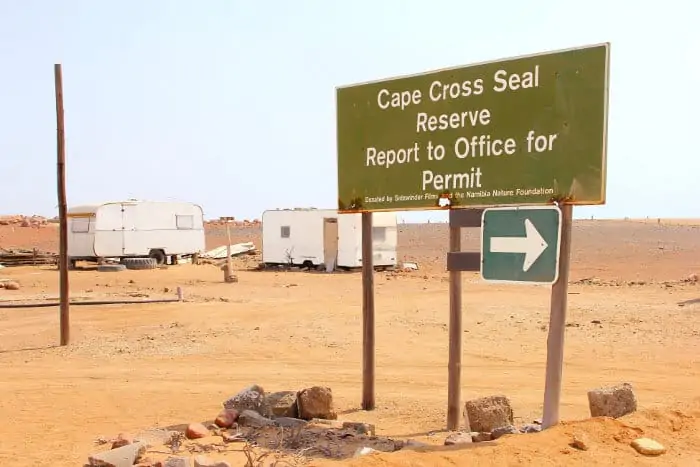
The Cape Cross Seal Reserve lies on Namibia’s Skeleton Coast, in the West Coast National Park region.
The Skeleton Coast is a harsh and unforgiving place, where the desert meets the ocean. Yet it’s incredibly beautiful, with a flair for the dramatic elements of nature. And the Cape Cross colony is just one of the many natural marvels it offers.
The reserve is close to the cities of Henties Bay and Swakopmund, which are both popular holiday destinations. Each one offers a range of desert adventures and ocean experiences, as well as plenty of accommodation options.
The journey from Swakopmund to Cape Cross is around 1.5 hours, while from Henties Bay, the drive is around 45 minutes.
Скаковая карьера
Комментарии принадлежат их авторам. Мы не несем ответственности за их содержание.
| Cantadoria | Отправлено: 22/4/2017 11:25 Обновлено: 22/4/2017 11:25 |
|
Ипподром — дом родной Дата регистрации: 30/1/2017 Откуда: Сообщений: 415 |
Re: Кейп Кросс |
| Lelik | Отправлено: 27/3/2016 20:37 Обновлено: 27/3/2016 20:37 |
|
Ипподром — дом родной Дата регистрации: 7/9/2012 Откуда: Сообщений: 670 |
Re: Кейп Кросс |
| MUSTANG70 | Отправлено: 14/10/2015 19:50 Обновлено: 14/10/2015 19:50 |
|
Ипподром — дом родной Дата регистрации: 9/6/2010 Откуда: Сообщений: 1265 |
Re: Кейп Кросс |
| Baho | Отправлено: 14/10/2015 13:41 Обновлено: 14/10/2015 13:41 |
|
Дата регистрации: 20/6/2012 Откуда: Сообщений: 10131 |
Re: Кейп Кросс |
| berendger | Отправлено: 14/10/2015 0:05 Обновлено: 14/10/2015 0:05 |
|
Ипподром — дом родной Дата регистрации: 31/8/2011 Откуда: Волгоград Сообщений: 1599 |
Re: Кейп Кросс |
| Baho | Отправлено: 13/10/2015 23:40 Обновлено: 13/10/2015 23:40 |
|
Дата регистрации: 20/6/2012 Откуда: Сообщений: 10131 |
Re: Кейп Кросс |
| berendger | Отправлено: 13/10/2015 23:07 Обновлено: 13/10/2015 23:07 |
|
Ипподром — дом родной Дата регистрации: 31/8/2011 Откуда: Волгоград Сообщений: 1599 |
Re: Кейп Кросс |
Пылкая фантазия и настоящая реальность
Пустынный пляж. Остовы деревянных кораблей. У некоторых еще уцелели мачты. Повсюду разбросаны канаты, деревянные бочонки, вещи. Все рассыпается в пыль при первом прикосновении. Полузасыпанная песком группа скелетов, один из которых детский… Печальное место, где несколько капель воды представляют большую ценность, чем горсть найденных здесь алмазов.
Говорят, именно таким предстал перед первопроходцами этот смертельно опасный и негостеприимный берег.
Кучки выбеленных солнцем костей, давших пугающее название региону, и сейчас еще можно встретить. Только теперь это исключительно кости животных — китов и тюленей. Уолфиш-Бей недаром переводится, как Китовый залив. Некогда здесь велся большой китовый промысел, вот следы и остались. Да бывает еще иногда, что по неведомым причинам морские гиганты сами выбрасываются на берег Скелетов.
В этой печальной ситуации утешает лишь то, что смерть одних означает жизнь для других, например, крабов и чепрачных шакалов. Иногда и гордые львы не брезгуют морской падалью: на берегу залива Торра-Бей было замечено, как царь зверей кормился тушей кита. Остатки трапезы — огромные позвонки и впечатляющие ребра китов пополняют скопления, лежащие среди песков.
История побережья изобилует трагическими кораблекрушениями. На протяжении веков более 500 судов здесь встретили свою судьбу — океанские лайнеры, траулеры, галеоны, клиперы, канонерские лодки. Из тех, что океан выбросил на берег, часть — едва узнаваема, другие все еще находятся в удивительно хорошем состоянии.
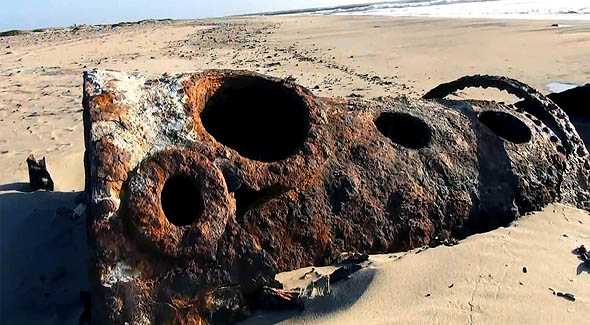
Жаль только, что самые интересные из них находятся на территории Skeleton Coast Wildernes. А вечно бурлящая здесь вода продолжает выносить из глубоководья на песок нетронутых пляжей монеты и мелкие артефакты.
Атлантический океан по-прежнему несет отголоски антарктических бурь к Берегу Скелетов Намибии, о край суши также беспрестанно бьется упорный и тяжелый прибой. В этом смысле тут все осталось без перемен. В 2006 году из бухты Уолфиш-Бей шторм утащил рыболовное судно «Колманскоп» и бросил его на камни. Снять его оттуда никто даже и не пытался.

А еще с побережьем связаны интересные и пока необъяснимые явления: бывает, что на небе появляются ложные солнца, иногда из океанских глубин идет странный рокот и краснеет вода, порой грозным гулом, словно низколетящие самолеты, ревут дюны, а на траверзе Уолфиш-Бея появляются суда, которые давно затонули…
Но все же в настоящее время Берег Скелетов воспринимается не как дикая и бесплодная местность с аурой тайны, но как место спокойствия и красоты.
A Brief History of the Cape Cross Seal Colony
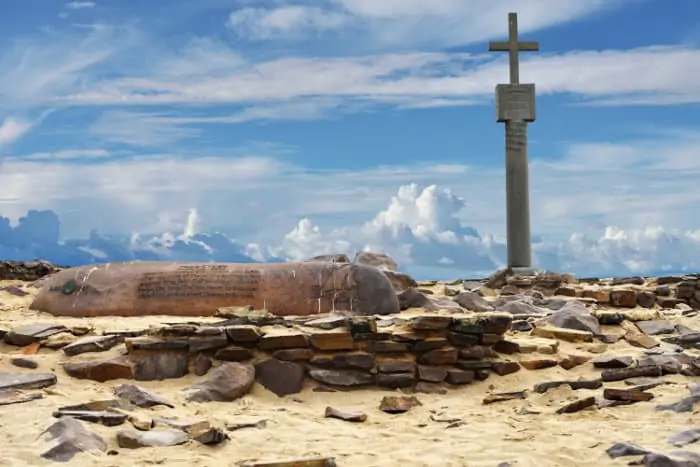
The first official visit to Cape Cross was in 1486. Diogo Cão, a famous Portuguese sailor, erected a “padrao” (stone cross) and established a claim to the territory on this desolate coast.
However, the history of the coast’s seals likely extends far beyond the earliest European explorers. Based on ancient rock art in the region, it seems that the seals have called the area home for many centuries. The indigenous San people of old likely hunted these seals and fished in the icy waters.
However, it wasn’t until 1884 that humans first officially recorded sightings of Cape fur seals off the coast of Southern Africa.
The first settlers arrived at Cape Cross in 1895 in pursuit of a peculiar commodity. So, for what riches did they leave the comforts of home and travel to the notoriously harsh Skeleton Coast?
Believe it or not, they came to extract “guano“, the droppings of fish-eating birds. They shipped the guano back to Europe, where it was used as a sought-after fertilizer.
Sadly, seal pelts were also a valuable export at the time and remain so to this day. It wasn’t until 1968 that the country established the reserve to protect the area and its wildlife. But that hasn’t prevented mass culling of the Cape Cross seals.
A fishing controversy
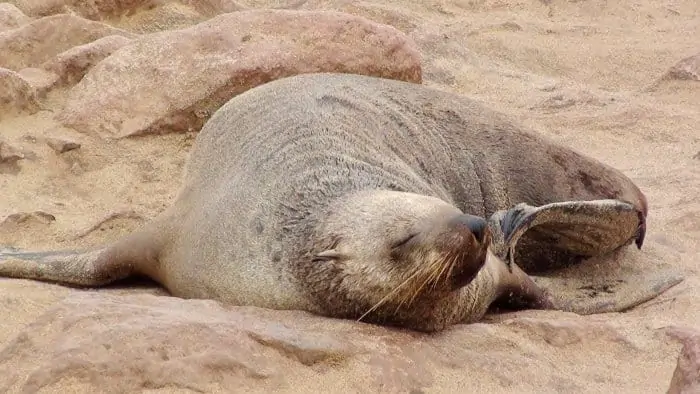
The culling of seals at Cape Cross has stirred controversy among conservationists and locals. Some believe that the seals have a significant impact on the local fishing industry – claiming that they take too much of the fish for themselves.
This has made the site one of the only places in Namibia where the culling of thousands of seals happens annually. While hunters sell their pelts for profit.
On the other hand, some conservationists claim that the seals have a negligible impact on human fishing efforts. They believe that the culling is senseless and unfounded.
In any case, it’s a sad reality – at least for now.
Потомство
| Год | Кличка | Побед | Призовых мест | Всего стартов |
|---|---|---|---|---|
| 2015 | ||||
| Кейп Фридом (Cape Freedom) | ||||
| Норд Кросс (Nord Cross) | 1 | 2 | ||
| 2014 | ||||
| Сенчьюри Дрим (Century Dream) | 1 | |||
| Уолтон Стрит (Walton Street) | 2 | 2 | ||
| 2013 | ||||
| Кроссмэн (Crossman) | 2 | 6 | 11 | |
| Примеро (Primero) | ||||
| Уэст Кост Флайер (West Coast Flyer) | 1 | |||
| Элеко (Aleko) | 4 | 9 | ||
| 2012 | ||||
| Голден Хорн (Golden Horn) | 1 | 1 | ||
| Грейтест Хитс (Greatest Hits) | 3 | |||
| Гуд Джадж (Good Judge) | 1 | |||
| Кинг Болет (King Bolete) | 1 | |||
| Классик Коллекшн (Classic Collection) | 1 | 1 | 3 | |
| Пролоджи (Prologue) | 1 | 1 | ||
| Резонант (Resonant) | 1 | 2 | 8 | |
| 2011 | ||||
| Анфогивин Минит (Unforgiving Minute) | 2 | |||
| Бидэйл (Bedale) | 3 | |||
| Корт Рум (Court Room) | 2 | 4 | ||
| Ланарк (Lanark) | 1 | 1 | ||
| Мемориал Дэй (Memorial Day) | 2 | 3 | ||
| Санта Тереза (Santa Teresa) | ||||
| Талмада (Talmada) | ||||
| Тэкнин (Taqneen) | 2 | 2 | ||
| Францистаун (Francistown) | 2 | |||
| Хантерс Крик (Hunters Creek) | 1 | 4 | ||
| Эстебан (Esteban) | 1 | |||
| 2010 | ||||
| Веллингроув (Wellingrove) | 3 | |||
| Джэлэди (Jaladee) | 1 | |||
| Кросс Грэйн (Cross Grain) | 1 | 2 | 3 | |
| Лайф Партнер (Life Partner) | 1 | 3 | ||
| Яррум (Yarroom) | ||||
| 2009 | ||||
| Куин оф Карсэйдж (Queen of Carthage) | ||||
| Ласт Файтер (Last Fighter) | 1 | |||
| Экрос Тзе Галакси (Across The Galaxy) | ||||
| 2008 | ||||
| Илландрэйн (Illandrane) | ||||
| Машаареф (Mashaaref) | 1 | 4 | ||
| Меловия (Melovia) | ||||
| Сайнс Ин Тзе Сэнд (Signs In The Sand) | 2 | 3 | ||
| Фанон (Funon) | 1 | |||
| Хаула (Khawlah) | ||||
| Эпперел (Apparel) | ||||
| 2007 | ||||
| Соспира (Sospira) | ||||
| ЭЛеджендИнМайОунМайнд (Alegendinmyownmind) | ||||
| 2006 | ||||
| Блэк Игл (Black Eagle) | 1 | 2 | ||
| Борн Эген (Born Again) | ||||
| Инчмина (Inchmina) | ||||
| Кросс Секшен (Cross Section) | ||||
| Малеха (Maleha) | ||||
| Премьер Банкир (Premier Banker) | 4 | 5 | 10 | |
| Си Тзе Старс (Sea The Stars) | ||||
| 2005 | ||||
| Луз Джули (Loose Julie) | ||||
| Привет (Privet) | ||||
| Хэйдаа (Ghaidaa) | ||||
| Эксэлтэнт (Exaltante) | ||||
| 2004 | ||||
| Калина Красная (Calina Crassnaja) | ||||
| Куралай (Kuralai) | 1 | 3 | 4 | |
| Халикарнассус (Halicarnassus) | ||||
| Шанава (Shanawa) | 1 | 2 | ||
| 2003 | ||||
| Ре Бароло (Re Barolo) | 1 | |||
| Сабана Пердида (Sabana Perdida) | ||||
| Фэмилиар Территори (Familiar Territory) | 1 | |||
| 2002 | ||||
| Эйбл Уан (Able One) | 1 | |||
| 2001 | ||||
| Мазуна (Mazuna) | ||||
| Мьюзиканна (Musicanna) | ||||
| Самания (Samaniya) | ||||
| Суит Кейп (Sweet Cape) | ||||
| Уиджа Борд (Ouija Board) |
About Cape Cross Lodge — Namibia
Just an hour’s drive north of Swakopmund and 53km from Henties Bay is the Cape Cross Seal Reserve – the largest mainland breeding colony of the Cape seal in the world. Cape Cross gets its name from a stone pillar erected by Portuguese explorer Diego Cao.
The Namib Desert is not only one of the world’s oldest deserts, but also one of the driest. No fresh water is naturally available at Cape Cross. All water is transported over land from Henties Bay. However, the absence of natural fresh water will be no problem for the traveller. Be assured that our valued clients are spoiled in luxury rooms with all the necessary facilities.
One would expect to see an abundance of marine mammals such as Cape seals, but what might surprise most visitors are the relatively large numbers of jackal and brown hyena. Both species are fully adapted to survive in this hostile environment.
Birdlife can only be described as prolific with most of South Africa’s marine species present and in abundance
Honeymooners and private functions are a specialty of Cape Cross Lodge. Guests will be delighted with the desert flora and fauna, not the least of which are the ancient Welwitschia plants, dating back 2 000 years. The history and geology of the Skeleton Coast will fascinate you. The coast is a paradise for fishermen, and fishing gear is available to guests, but bring your own surfboard.
The Location
A mere 4km from the seal reserve you will come across Cape Cross Lodge. Ideally suited for those exploring the Skeleton Coast and Damaraland, Cape Cross Lodge is a haven for travellers, with a glassed frontage to maximize the natural light. For those misty, cool days, a blazing fire will welcome you in and ward off the chill.
Cape Cross Lodge offers eighteen sea view standard suites and two luxurious sea view semi-suites. All rooms offer excellent panoramic views over the beautiful Atlantic Ocean. The rooms on the first floor offer private balconies and the ground floor rooms have direct excess to the beach. As you can expect from a lodge renowned for its high standards, the bathrooms are spacious and luxurious.
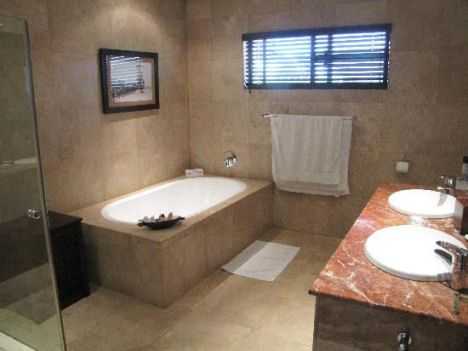
Our Food
The restaurant, with its central fireplace, is the place to be in the evenings. The fire warms the dining room and lounge area during winter and colder days. The fresh sea breeze cools this area down during the warmer summer days.
The menu is extensive and Cape Cross lodge offers seafood, game and a wide variety of salads and desserts to satisfy everybody’s tastes. Dinner is often served around open fires.
Cape Cross Lodge is known for its excellent breakfast buffet and afternoon coffee/tea with their famous home baked cake.
Lunch is a ’la carte and day visitors are welcome.

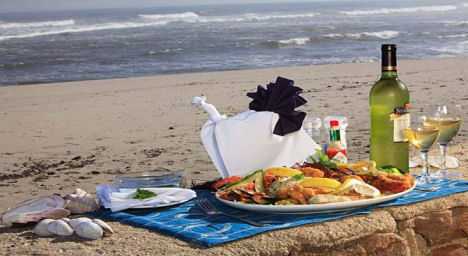
The time you spend at Cape Cross Lodge will never be boring. The main attraction might be the massive colony of Cape Fur Seals less than 2 km from the lodge but, visiting the colony is certainly not the only activity.
The lodge is at one of Namibia’s best fishing spots and fishing can be arranged. We recommend tag and release, but for those who want to freeze their fish, we are more than willing to help.
A collection of excellent paintings is displayed at the lodge. Both to admire, or to buy if you want to make use of the time and make an investment.
In 1486, early Portuguese explorers erected a cross on a rock. In spite of the very harsh conditions, the cross remained there for four centuries and gave name to the nature reserve and the lodge.
The museum which is in the lodge, houses many remnants left by past settlers who visited the area to fish, mine salt and hunt whales.
Тығыздық қоры
Кейп Крест итбалық колониясындағы қақтығыс
Бүгін Кейп Крос а қорғалатын аймақ деген атпен Намибия үкіметіне тиесілі Cape Cross Seal қорығы. Қорық — бұл ең ірі колониялардың бірі Мүйізден жасалған итбалықтар Әлемде.
Кейп Крос — Намибиядағы екі негізгі сайттың бірі (екіншісі орналасқан) Людериц) мөрлер орналасқан жойылды, ішінара терісін сатуға және ішінара балық қорын қорғауға арналған. Итбалықтардың балық ресурстарына тигізетін экономикалық әсері қайшылықты: үкіметтің бастамасымен жүргізілген зерттеу нәтижесінде итбалық колониялары бүкіл балық аулау өнеркәсібінің аулауынан көп балықты тұтынады, Жануарларды қорғау қоғамы Seal Alert Оңтүстік Африка коммерциялық балық аулауға шығындардың 0,3% -дан аз екенін бағалады.













![Мыс крестсодержание а также история [ править ]](http://manicurmarket.ru/wp-content/uploads/4/1/e/41e9f84590fa72a253a978caad8f3531.jpeg)














